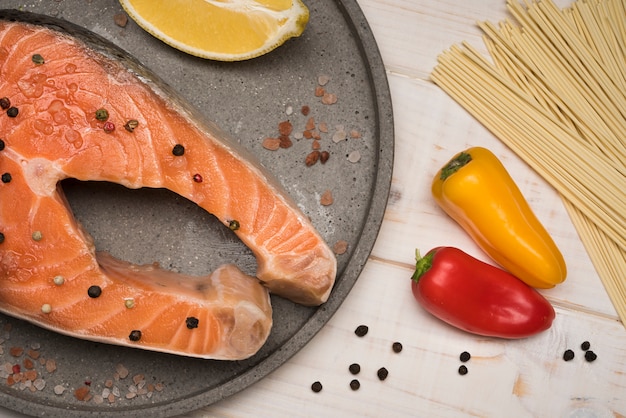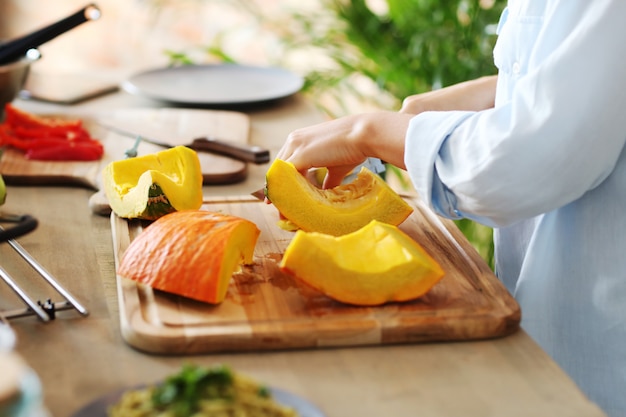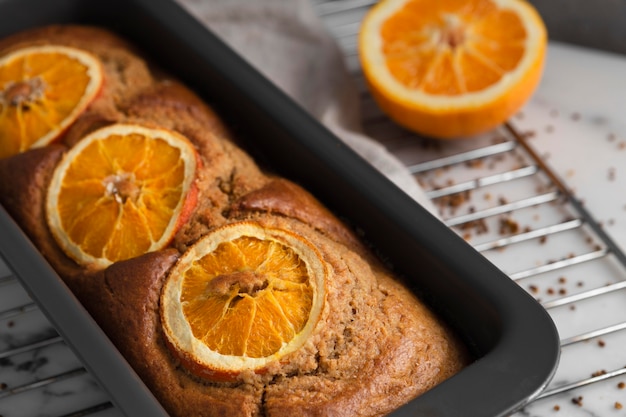As a seasoned home cook, I've spent countless hours in the kitchen, experimenting with different recipes and techniques. But there's one dish that always brings me back for more – salmon. This versatile fish, with its delicate, flaky texture and rich flavour, is a culinary masterpiece. But getting it perfectly cooked, that's where the real art lies. You can't just throw it in the oven and expect perfection. There's a science to it, a delicate dance between heat and time, that needs to be mastered.
Over the years, I've tried countless oven temperatures, cooking times, and techniques, always searching for that magic combination that delivers melt-in-your-mouth salmon. It's been a journey of exploration, trial and error, but I've finally cracked the code, and I'm excited to share my discoveries with you. Let's dive in!
Part 1: The Importance of Temperature

Why is oven temperature so crucial when it comes to cooking salmon? Well, imagine this: You're aiming for a beautiful golden-brown exterior that crisps up perfectly, and a juicy, moist interior that melts in your mouth. Too low a temperature, and your salmon will dry out, becoming tough and rubbery. Too high, and you'll end up with a burnt exterior and a raw, undercooked centre – a culinary disaster!
The Goldilocks Zone for Salmon
After countless experiments, I've found that the "just right" temperature for oven-baked salmon is between 350°F (175°C) and 400°F (200°C). It's not just about the temperature itself, it's about the delicate balance between the heat and the time it takes to cook the salmon. Think of it as a culinary symphony, where the heat and time play together to create a perfectly cooked dish. You need enough heat to get that gorgeous crispy skin, but not so much that the interior dries out.
Part 2: Understanding the Basics: Salmon Anatomy

Before we get into the nitty-gritty of oven temperatures and cooking times, let's take a closer look at the salmon itself. Understanding the anatomy of this magnificent fish is essential for achieving that perfect cook. It's like knowing the parts of a musical instrument – you need to understand each part to play it beautifully.
Skin, Flesh, and Bone: A Trio of Importance
The skin is the first line of defense against overcooking, acting like a protective barrier for the delicate flesh beneath. A good, crisp skin, like a perfectly seasoned guitar string, adds a delightful crunch and visual appeal to the dish. The flesh is the star of the show, offering that rich, buttery flavour and melt-in-your-mouth texture that we all crave. And finally, we have the bone, which, depending on the cut, can be a delightful addition to the meal, adding depth of flavour, or a nuisance to be avoided.
Part 3: choosing the right cut

The type of salmon cut you choose will significantly influence the cooking time and the best oven temperature. Each cut offers its own unique characteristics and culinary possibilities. Here's a quick guide to some of the most popular salmon cuts:
salmon fillets
These are the most versatile and widely available cuts, typically skin-on and boneless. They're perfect for individual portions and cook relatively quickly. Think of them as the "entry-level" salmon cut, ideal for beginners and seasoned chefs alike.
Salmon Steaks
These are thicker, meatier cuts, usually with the bone intact. They take a bit longer to cook, but the bone adds a depth of flavour to the flesh. Steaks are perfect for those who enjoy a more substantial meal, and the bone adds a touch of rustic charm.
Salmon Sides
These are smaller, boneless cuts, often considered the "mini-fillets." They're perfect for grilling, baking, or pan-frying, offering a quicker cooking time and a convenient size.
Part 4: Preparing Your Salmon for Oven Perfection
Now that you've chosen your cut, it's time to give your salmon a little TLC before it goes into the oven. Like a musician tuning their instrument, preparing your salmon is key to unlocking its full potential.
Seasoning: A Symphony of Flavours
I believe in simplicity when it comes to seasoning salmon. Salt and pepper are the foundation, creating a base for the flavours to build upon. But don't be afraid to experiment with other spices, depending on your taste and the dish you're creating. Lemon zest, paprika, garlic powder, and herbs like dill or rosemary add depth and complexity to the flavour profile. Remember, a little goes a long way – you want to enhance, not overpower, the natural flavours of the salmon.
Skin Side Up or Down?
This is a culinary debate that has raged on for years. Some chefs prefer skin-side up, believing it helps protect the delicate flesh from overcooking. Others favour skin-side down, arguing that it creates a crispy skin. My personal preference, and I'm sure many will agree, is skin-side down. It gives me that lovely crispy skin I crave. It's like the perfect ending to a musical piece – a satisfying crunch that adds texture and depth to the overall experience.
A Bed of Comfort: The Importance of a Baking Sheet
No matter what temperature you choose, the key is to ensure your salmon is evenly cooked. To achieve this, you'll need a good-quality baking sheet. I recommend using a non-stick baking sheet to prevent sticking and ensure even cooking. Think of it as the stage on which your culinary masterpiece unfolds – it needs to be solid and reliable to support the performance.
Part 5: The Art of Oven baking salmon
Now, onto the baking process. We're almost there! It's time to bring together all the elements we've discussed and create a culinary symphony that will tantalise your taste buds.
The Ideal Temperature: 375°F (190°C)
After extensive experimentation, I've found that 375°F (190°C) is the sweet spot for oven-baked salmon. It delivers that perfect balance of crispy skin and juicy interior, in my opinion. This temperature is like the conductor of the orchestra, setting the pace for the symphony and ensuring all the elements work harmoniously.
Cooking Time: A Matter of Thickness
The cooking time will vary depending on the thickness of your salmon fillet. As a general rule of thumb, a 1-inch thick fillet will take about 12-15 minutes. For thicker fillets, add a few minutes to the cooking time. If you're unsure, a meat thermometer is your best friend. It's like the metronome of the culinary world – it helps you keep track of the timing and ensure the salmon is cooked to perfection.
Checking for Doneness: The Fork Test
You know that salmon is cooked when the flesh flakes easily with a fork. It should also be opaque and slightly firm to the touch. This is the equivalent of listening for the right note – a clear indication that the salmon is ready for the final performance.
Resting: A Crucial Step
Once your salmon is cooked, resist the urge to dig in right away. Give it a few minutes to rest before you serve it. This allows the juices to redistribute, resulting in a more succulent and flavorful fish. It's like letting the music linger in the air, allowing the flavours to harmonize and reach their full potential.
Part 6: Beyond the Basics: Advanced Techniques
Now that you have the basic oven-baked salmon down pat, let's explore some advanced techniques to elevate your cooking game. These are the advanced chords and melodies that can transform your salmon dish from good to extraordinary.
Glazing: A Touch of Sweetness
A glaze adds a layer of sweetness and shine to your salmon, like a touch of shimmering gold to a musical score. You can make a simple glaze with honey, soy sauce, and ginger, or get creative with your favourite flavours. Brush the glaze on the last few minutes of cooking to prevent burning.
Pan-Seared salmon: A Touch of Crispy Perfection
For an extra layer of flavour and texture, consider pan-searing your salmon before baking. This creates a crispy crust, like a powerful drumbeat, adding depth to the flavour. Just make sure to sear the skin side first for a few minutes to get that perfect crisp.
Foil-Baked Salmon: A Simple and Delicious Option
Foil-baked salmon is a super easy and foolproof method. Simply place your salmon on a piece of foil, season it, and add any other ingredients you like. Fold the foil over to create a packet, then bake until the salmon is cooked through. The foil helps retain moisture and prevents the fish from drying out, like a protective case for a delicate instrument.
Part 7: Delicious Accompaniments
No salmon dish is complete without the right accompaniments. They are the supporting instruments that play alongside the salmon, creating a harmonious ensemble. Here are a few ideas to inspire your culinary creativity.
Roasted Vegetables: A Rainbow of Flavours
Roasted vegetables are a classic pairing for salmon, offering a delightful contrast of textures and flavours. Asparagus, broccoli, Brussels sprouts, carrots, and zucchini are all great options. They add a colourful and flavourful counterpoint to the salmon's richness.
Green Salad: A Refreshing Contrast
A fresh green salad provides a light and refreshing contrast to the richness of the salmon, like a pause between movements in a symphony. Try a simple salad with mixed greens, tomatoes, and cucumbers.
Creamy Sauces: A Touch of Luxury
Creamy sauces can elevate your salmon dish to new heights, adding a touch of elegance and decadence. A classic hollandaise sauce is always a hit, but you can also experiment with other creamy options like lemon butter sauce or dill sauce.
Part 8: FAQs: Your Salmon Queries Answered
Now, let's address some common questions about cooking salmon. These are the frequently asked questions that help you navigate the world of salmon cooking with confidence.
1. Can I bake salmon from frozen?
It's not ideal, but you can bake salmon from frozen. Just add a few extra minutes to the cooking time and make sure it's cooked through. It's like playing a piece of music without proper preparation – it might work, but the results might not be as pleasing.
2. What are the signs of overcooked salmon?
Overcooked salmon will have a dry, flaky texture and may be slightly rubbery. The flesh will also be opaque and the skin may be tough. It's like playing a note out of tune – it disrupts the harmony and detracts from the overall experience.
3. What are the health benefits of salmon?
Salmon is a great source of omega-3 fatty acids, which are essential for heart health. It's also packed with protein and other nutrients. It's like a musical instrument that provides a range of benefits for your well-being.
4. Can I cook salmon skin-side up?
You can cook salmon skin-side up, but it's not as common. The skin may not get as crispy as it would if you cooked it skin-side down. It's like playing a song backwards – it might be interesting, but it's not the intended effect.
5. What are some other ways to cook salmon?
Besides baking, salmon can also be grilled, pan-fried, poached, or smoked. Experiment with different methods to find your favourites. It's like exploring different genres of music – there's a whole world of possibilities to discover.
Part 9: Salmon: A Culinary Treasure
So there you have it, my culinary adventures in pursuit of the perfect oven-baked salmon. It's a dish that consistently delights, whether it's a simple weeknight meal or a special occasion dinner. I encourage you to experiment with different temperatures, techniques, and seasonings to find your own perfect salmon experience. Happy cooking!
Part 10: My Final Thoughts
In the end, cooking salmon is all about finding what works best for you. There's no one-size-fits-all approach. Trust your instincts, don't be afraid to experiment, and enjoy the process. After all, cooking is a journey, not a destination. It's about discovering new flavours, trying new techniques, and enjoying the creativity that comes with being in the kitchen.
Part 11: A Table of Oven Temperatures and Cooking Times
| Oven Temperature (°F) | Oven Temperature (°C) | Cooking Time (1-inch thick fillet) |
|---|---|---|
| 350 | 175 | 15-18 minutes |
| 375 | 190 | 12-15 minutes |
| 400 | 200 | 10-12 minutes |
Remember, these are just guidelines. The cooking time will vary depending on the thickness of your salmon, the type of oven you have, and your personal preference. Use a meat thermometer to ensure your salmon is cooked through.
Happy cooking!
Everyone is watching

Prime Rib Roast Cooking Time Chart: Per Pound Guide
Cooking TipsPrime rib roast. Just the name conjures images of lavish dinners, crackling fires, and hearty laughter. It’s ...

How Long to Bake Potatoes in the Oven (Perfect Every Time)
Cooking TipsBaked potatoes are a staple in my kitchen. They're incredibly versatile, delicious, and surprisingly easy to m...

Perfect Rice Every Time: The Ultimate Guide to Cooking Rice
Cooking TipsAs a self-proclaimed foodie, I've always been a bit obsessed with rice. It's the foundation of countless cuisi...

The Ultimate Guide to Cooking Asparagus: Tips, Techniques, and Recipes
Cooking TipsAsparagus. The mere mention of this spring delicacy conjures up images of vibrant green spears, crisp and burs...

Ultimate Guide to Cooking the Perfect Thanksgiving Turkey
Cooking TipsThanksgiving. Just the word conjures up images of overflowing tables laden with delicious food, the scent of r...
